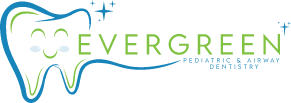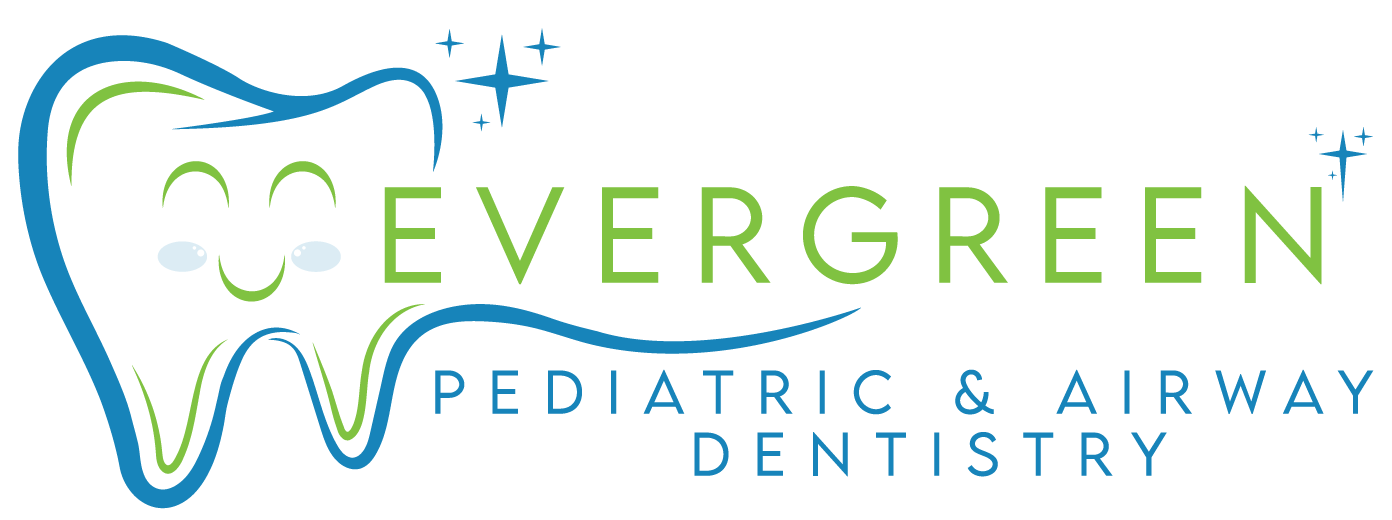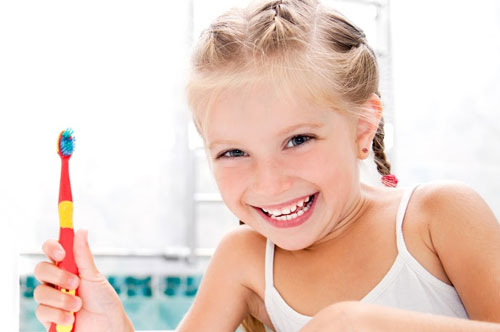June 26 may not mean a lot to you and your kiddos, but it’s an important day on our calendar here at Evergreen Pediatric & Airway Dentistry: National Toothbrush Day! This little-known holiday is a great opportunity to teach your children about brushing their teeth, and especially making it a normal part of their routine.
There may be more to know about brushing teeth than you realize! Let’s take a look at some toothbrush trivia below, and you can make it into a fun game for your kids.
- Store your toothbrushes in an area where they can dry out. This is true. Toothbrush containers should be used only for traveling because they hold in moisture and allow bacteria to build up. Keep your kids’ toothbrushes upright if possible, such as in a cup. Be sure to knock off or tap off extra water beforehand.
- It’s OK to share toothbrushes. False! A lot of bacteria live in our mouths, and this is an easy way to pass along germs – even if no one seems sick. Make sure your kids have their own toothbrushes and toothpaste too.
- Replace your kids’ toothbrushes once every three or four months, or whenever the bristles get frayed. True. Kids love to chew on toothbrushes, but that makes brushing ineffective. (Imagine trying to brush your hair with hairbrush bristles that are frayed and spread out!) Gently encourage them not to chew on it, and make sure to replace the brushes frequently for best results.
- Brush your kids’ teeth thoroughly to prevent decay – even babies can get cavities! True! It’s especially important to help your youngest children brush on all sides evenly. Many miss the back teeth or tend to brush in one area. Talk them through it while you watch them, play a two-minute song, or physically do it for them when they’re toddlers and preschool aged. Monitor until they can brush their teeth sufficiently on their own.
- Brush once a day for at least two minutes. False. You should brush your child’s teeth or make sure they brush their own teeth at least twice a day for two minutes. Be sure to use a fluoride toothpaste to prevent cavities (but don’t let them swallow it – that can lead to tooth discoloration over time!).
- Brush in circular motions for the best results. True. This provides the best coverage over their surfaces and helps get between teeth and in nooks and crannies. If your child is too young to brush this way, be sure to help them.
- An electric toothbrush is better. False. Kids’ electric toothbrushes and manual toothbrushes are both acceptable. As long as it’s comfortable and you brush correctly, the best toothbrush is the one your kids will use. Electric toothbrushes should be used for children at least 3 years old, however.
- Use harder-bristled toothbrushes. False! Medium or hard bristles do not clean better for adults or children; they actually wear down gums and enamel. A child’s enamel is not as hard as an adult’s, so it is more susceptible to damage and decay. Damage from harder bristles leads to receding gums, an often irreversible problem. Most children’s toothbrushes are soft-bristled or even extra-soft-bristled, so this is usually not a problem.
- Buy your child a toothbrush with a large head so it can clean more at once. False. You should choose a toothbrush that’s the right size for their mouth. If their toothbrush is comfortable in their mouth, they’ll be more likely to brush for the right amount of time, or at all.
Don’t feel guilty by rewarding your children or praising them for good toothbrushing habits. And don’t be afraid to make it fun however you can, whether by getting them involved in picking out their own toothbrush and toothpaste, playing their favorite song as a timer while they brush, turning on a YouTube video for distraction, using a toothbrush app, or creating a sticker chart. The list goes on, but like most other things with children, positive reinforcement is key!
Take a little time on National Toothbrush Day to prioritize oral health. You might celebrate with a special treat or a cool new toothbrush! If you have any questions about brushing your child’s teeth or anything else to keep their smile healthy, call our Kirkland office at [phone] or come in for your child’s dental checkup. You can also schedule an appointment [contact_us loc=”1″ text=”online”].



